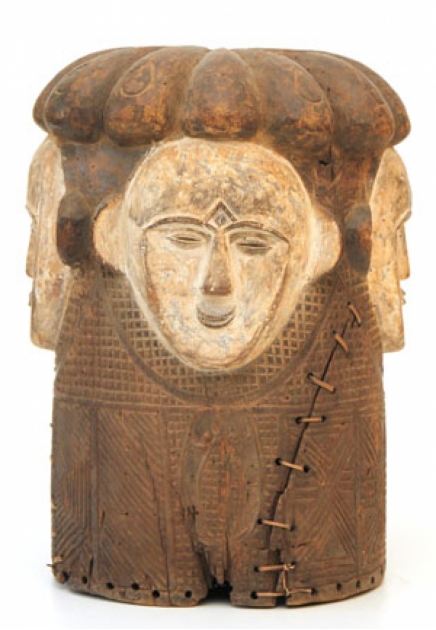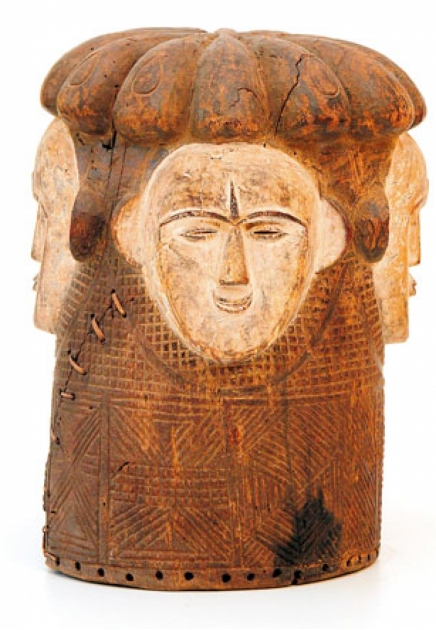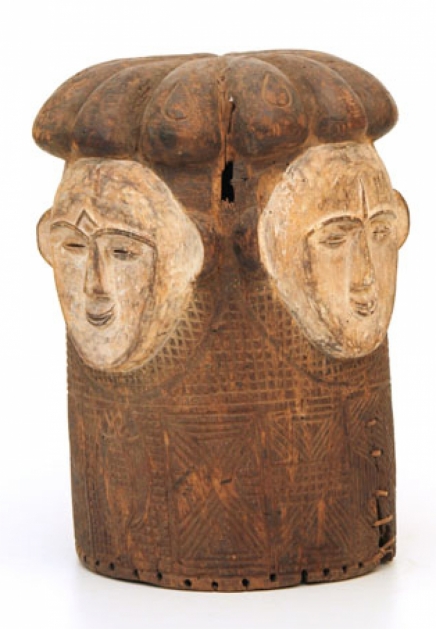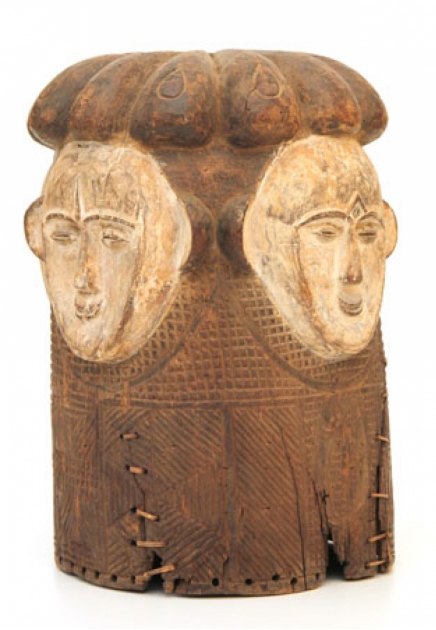Fang Helmet Mask
The Fang, who live in a northeast region of Gabon, were famous for their Byeri figures, guardians of ancestors' skulls kept in cylindrical bark containers, and for their Ngi, the white-faced masks associated with the Ngi society. Ngi masks were outlawed in 1910 by the French colonials following a series of ritual murders. Around 1920 a new mask was created, the Ngon-Tang, which symbolizes a "young white girl". It is a helmet mask, generally colored with white pigments, with two or four faces, each looking in a different direction. Although Janus-face carvings are quite common, the four-way version is rather unusual, and was used during funeral ceremonies and births. The symbolism of the many faces is not clear. They have been interpreted as a representation of the male-female; an allegory of death, life, birth and disease. Among the Fang people, the color white is associated with death and the ancestors' world . The Ngontang, the multi-faced helmet masks, were used in a dance by men in a ritual linked to the Byeri ancestral cult, and are often still used for a dance of rejoicing called Ngontang (Ngon means “young girl”). To dance Ngontang, the mask wearer would undergo an initiation ritual during which he would swallow medicine to gain lightness of movement, rub his body with protective potions, wear talismans and abstain from sex.This helmet mask has decorative pattern. The fine geometry of the features includes an incised vertical line in the middle of the forehead.
J. B Bacquart, The Tribal arts of Africa, 1998 p.124 pl. C; Newton & H. Waterfield, Tribal Sculpture 1995, p. 144




